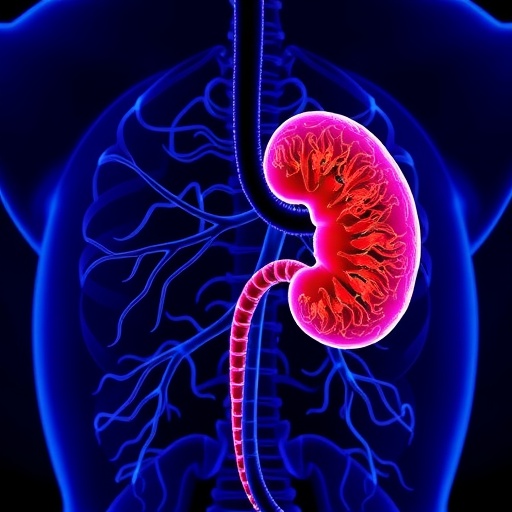Pancreatic cancer (PC) continues to be one of the most formidable challenges in oncology, representing a highly heterogeneous disease with pancreatic ductal adenocarcinoma (PDAC) accounting for approximately 90% of all cases. Despite its comparatively low incidence relative to other malignancies, pancreatic cancer stands as the third leading cause of cancer-related mortality in the United States, underscoring its aggressive nature and diagnostic complexities. Projections for 2024 estimate around 66,440 new diagnoses accompanied by 51,750 deaths, highlighting a near-parallel mortality-to-incidence ratio that mirrors the disease’s dismal prognosis.
The insidious biology of pancreatic cancer is compounded by the anatomical placement of the pancreas deep within the retroperitoneal space, a factor that significantly delays clinical detection. Symptoms are often vague and nonspecific, ranging from mild abdominal discomfort to unexplained weight loss, frequently leading to late-stage presentations. Alarmingly, over 80% of patients receive a diagnosis at advanced stages when surgical resection, the only curative option, is no longer feasible. The detection of premalignant lesions, such as intraductal papillary mucinous neoplasms (IPMNs), theoretically offers a window for early intervention; however, current screening methodologies are largely limited to individuals with heightened genetic or familial risk profiles, restricting their broader application.
Diagnostic imaging remains the linchpin for the detection, staging, and surgical planning of pancreatic tumors. Among these modalities, endoscopic ultrasound (EUS) excels in the visualization of small lesions measuring less than two centimeters, with innovations like EUS elastography and contrast-enhanced EUS further elevating sensitivity and specificity. Multi-detector computed tomography (MDCT) is the frontline imaging modality in clinical practice, boasting a tumor detection accuracy between 85 and 95%. It is essential not only for identifying lesions but also for evaluating vascular involvement and anatomical relationships critical for surgical decision-making. Magnetic resonance imaging (MRI) and positron emission tomography (PET) supplement these tools, with MRI facilitating tissue characterization to resolve ambiguous findings and PET enabling the assessment of metabolic activity. However, PET’s comparatively limited spatial resolution constrains its role in precise local staging.
.adsslot_4M7YO0LAB8{ width:728px !important; height:90px !important; }
@media (max-width:1199px) { .adsslot_4M7YO0LAB8{ width:468px !important; height:60px !important; } }
@media (max-width:767px) { .adsslot_4M7YO0LAB8{ width:320px !important; height:50px !important; } }
ADVERTISEMENT
The evolving landscape of molecular diagnostics has introduced a suite of promising biomarkers to complement imaging, enhancing early detection and treatment monitoring. CA 19-9 remains the most widely implemented serum biomarker for pancreatic cancer; nonetheless, its clinical utility is hampered by suboptimal specificity, as elevated levels may be observed in benign hepatobiliary conditions. Advances in liquid biopsy technology have facilitated the non-invasive detection of circulating tumor DNA (ctDNA), harboring tumor-specific genetic alterations, which not only assist in prognostication but also provide dynamic insights into treatment responses and resistance mechanisms. Additionally, microRNAs, particularly dysregulated species like miR-1290, are emerging as potential tools to discriminate malignant from benign pancreatic diseases in early stages. Concurrently, high-throughput proteomic analyses and radiomic profiling of imaging data are revolutionizing the identification of novel diagnostic signatures, aiming to transcend the limitations of single-marker approaches.
Therapeutic management of pancreatic cancer has traditionally been challenging due to the tumor’s complex microenvironment and intrinsic resistance to conventional chemotherapy. Recent advances focus on exploiting molecular vulnerabilities such as homologous recombination deficiency (HRD), which render tumors more susceptible to DNA-damaging agents like platinum compounds and PARP inhibitors, including olaparib. Immunotherapy, while transformative in many solid tumors, has demonstrated limited single-agent efficacy in PDAC owing to its profoundly immunosuppressive microenvironment. Yet, combination regimens targeting immune checkpoints, notably dual blockade of PD-1 and CTLA-4, show promise particularly in HRD-mutant subsets, stimulating renewed clinical interest.
Adoptive cell therapies represent another frontier. CAR T-cell approaches targeting antigens selectively overexpressed in pancreatic tumors, such as claudin 18.2 and mesothelin, are under intense investigation despite formidable barriers in solid tumor penetration and the immunosuppressive milieu. Cancer vaccines, including GVAX and dendritic cell-based platforms, seek to galvanize endogenous immune responses, though clinical outcomes have been heterogeneous, reflecting the intricate interplay of tumor and host factors.
Novel modalities aiming beyond direct tumor cytotoxicity are gaining traction. Oncolytic virotherapy utilizes genetically engineered viruses like VCN-01, designed to selectively infect and lyse cancer cells while concurrently enhancing anti-tumor immunity. Meanwhile, cutting-edge gene editing technologies such as CRISPR/Cas9 are being explored to disrupt tumor immune evasion pathways—for example, by knocking out CD73 to potentiate immune-mediated tumor clearance—and to reverse chemoresistance.
In conclusion, the multifaceted challenges of pancreatic cancer—from its elusive early detection to resistance mechanisms in therapy—necessitate an integrative approach that harmonizes advanced diagnostic modalities with novel targeted and immune-based therapies. The integration of ctDNA analysis, radiomics, and molecular profiling with innovative treatments including CAR T-cells, vaccines, and microenvironment modulation holds transformative potential. It is within these convergent strategies that hope lies for altering the grim landscape of pancreatic cancer prognosis, paving the way towards precision medicine and improved survival outcomes for this devastating disease.
Subject of Research: Pancreatic Cancer Diagnosis and Treatment Innovations
Article Title: Journal of Translational Gastroenterology
News Publication Date: 7-May-2025
Web References: http://dx.doi.org/10.14218/JTG.2024.00037
Keywords: Pancreatic tumors, Pancreatic cancer, Cancer treatments, Cancer immunotherapy, Cancer vaccines
Tags: genetic risk factors for pancreatic cancerinnovative treatments for pancreatic cancerlate-stage pancreatic cancer diagnosispancreatic cancer diagnostic imagingpancreatic cancer early detectionpancreatic cancer mortality statistics 2024pancreatic cancer treatment advancementspancreatic ductal adenocarcinoma challengespremalignant lesions in pancreatic cancerscreening methodologies for pancreatic cancersurgical options for pancreatic cancersymptoms of pancreatic cancer





